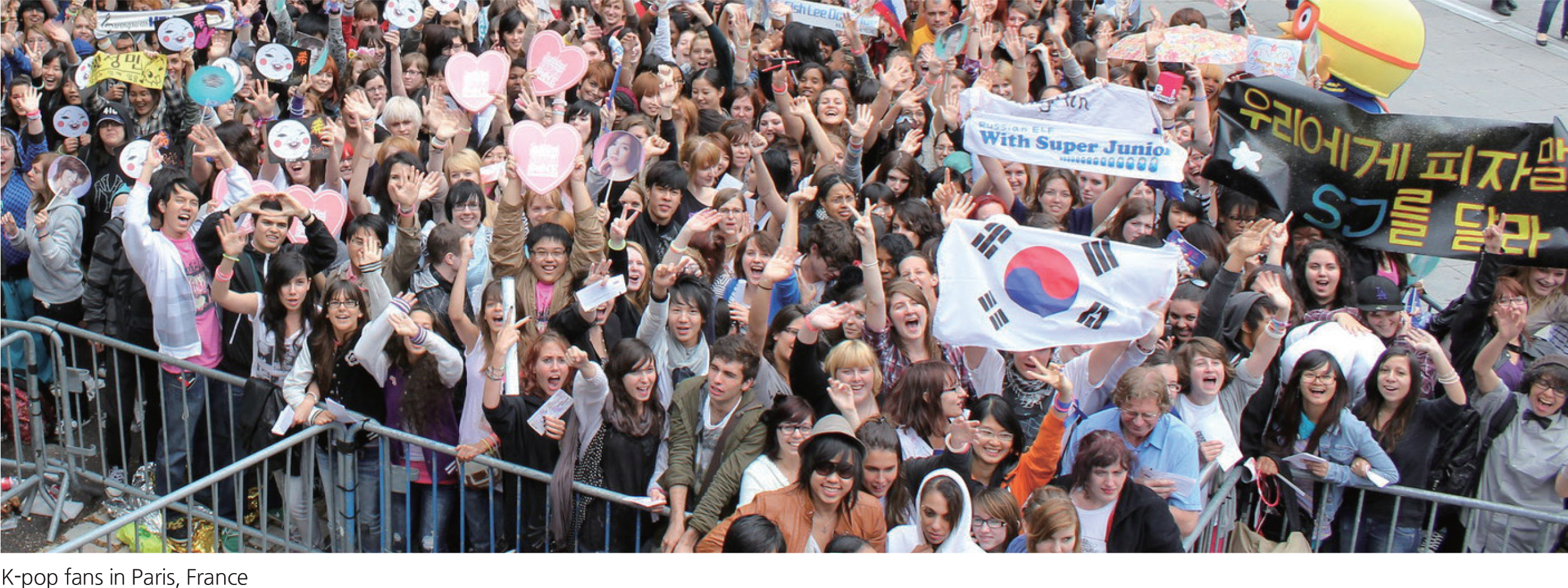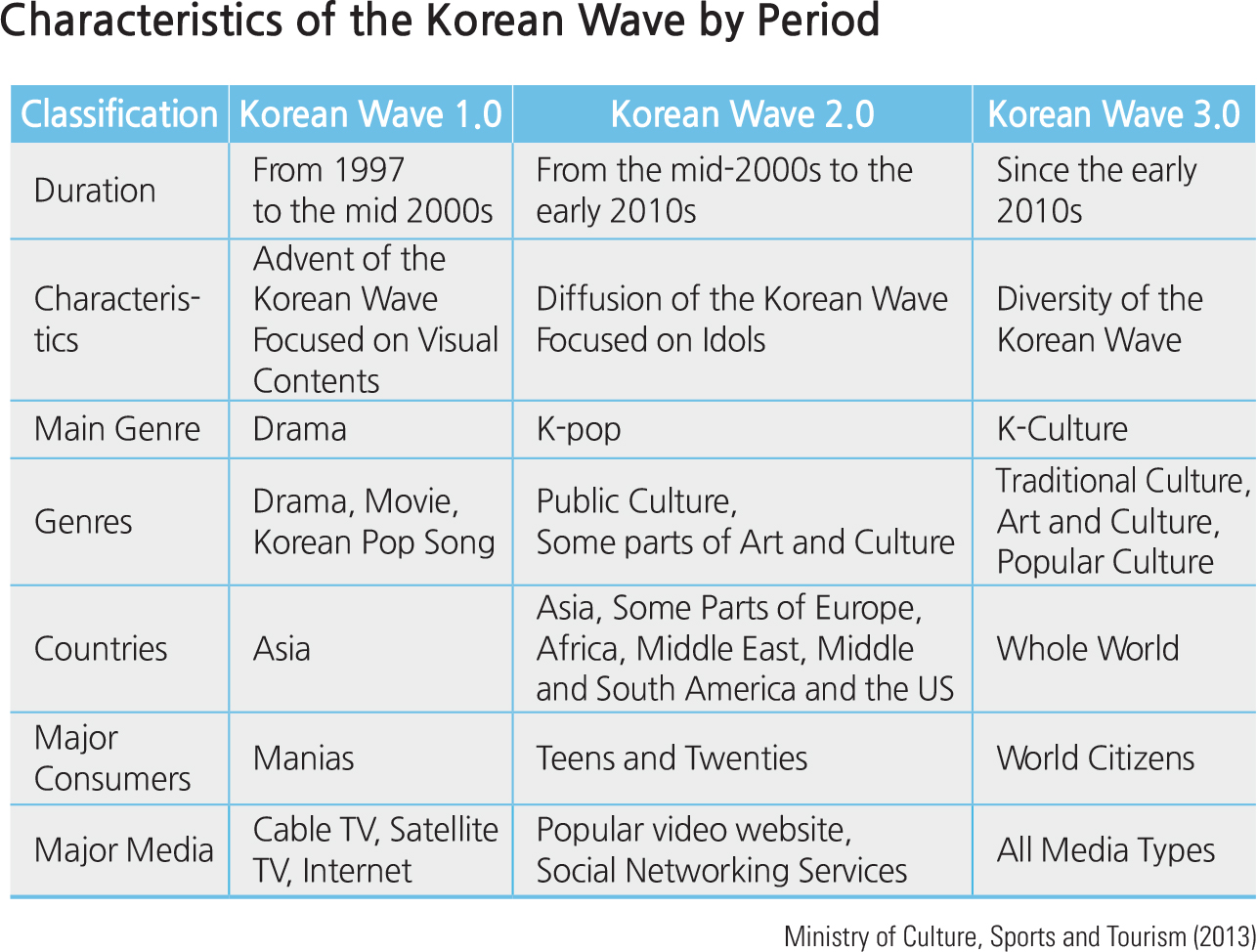South Korea is increasingly well connected with the rest of the globe. These connections occur as diplomatic ties, trade relations, educational exchanges, and tourism, for example. Perhaps the most widely-dispersed Korean export, especially among the young, is the export of Korean culture: K-pop, K-dramas, Korean designed video and computer games, animations, and comics. Korean pop culture has washed across the world’ shores rapidly and extensively like a global ocean wave: the Korean Wave.
The early ripples of interest in all things Korean started in 1997 when Korean dramas were first broadcast on television in China, quickly becoming very popular there. Korean K-pop music gained popularity on radio and in dance venues in China and other Asian countries. By the mid-2010s the Internet and social media had helped spread K-pop to a much wider audience including Europe, the Americas, and elsewhere. Fans, mostly in their teens and twenties, could easily view and share K-pop music and dance via internet video sites. For many people, an initial interest in K-pop and K-dramas expanded to include other aspects of Korean culture: traditional art, history, and language. The growing interest in “-culture”is growing to include people across the globe and of all ages.
The economic value of K-culture exports is shown on the chart below and in the map at right. The gaming industry accounts for the largest monetary value. Most exports of games, music, associated merchandise and other media go to countries in Asia, followed closely by North America and Europe.




